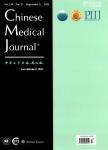Computer-assisted navigation systems for insertion of cannulated screws in femoral neck fractures: a comparison of bi-planar robot navigation with optoelectronic navigation in a Synbone hip model trial
Computer-assisted navigation systems for insertion of cannulated screws in femoral neck fractures: a comparison of bi-planar robot navigation with optoelectronic navigation in a Synbone hip model trial作者机构:Department of Orthopaedics and Traumatology Beijing Jishuitan Hospital Beijing 100035 China
出 版 物:《Chinese Medical Journal》 (中华医学杂志(英文版))
年 卷 期:2011年第124卷第23期
页 面:3906-3911页
核心收录:
学科分类:081104[工学-模式识别与智能系统] 08[工学] 081105[工学-导航、制导与控制] 0811[工学-控制科学与工程]
基 金:supported by a grant from Beijing Municipal Committee of Science and Technology
主 题:femoral neck," computer-assisted navigation screw fixation
摘 要:Computer-assisted procedures have recently been introduced for navigated femoral neck screw placement. Currently there is little information available regarding accuracy and efficiency of the different navigated procedures. The aim of this study was to compare two fluoroscopic navigation tracking technologies, a novel bi-planar robot navigation and standardized optoelectronic navigation, versus standard freehand fluoroscopic insertion in a Synbone hip model. Methods Eighteen fixed Synbone hip models were divided into 3 groups. C-arm navigated cannulated screws (AO-ASIF, diameter 7.3 mm) were inserted using freehand targeting (control group). A novel bi-planar robot system (TINAV, GD2000) and an optoelectronic system (Stryker OTS Navigation System) were used for the navigated procedures (robot group and optoelectronic group). Accuracy was measured using radiographic evaluation including the measurement of screw parallelism and decentralization, and joint penetration. To evaluate the efficiency, the number of guidewire passes, operative time and fluoroscopic images taken were noted. Results The two computer-assisted systems provided significantly improved accuracy compared to the freehand technique. Each of the parameters, including guidewire passes and number of fluoroscopy images, was significantly lower when using the computer-assisted systems than for freehand-unguided insertion (P 〈0.05), but operative time was significantly shorter when using freehand-unguided insertion than for the computer-assisted systems (P 〈0.05). Accuracy, operative time and number of fluoroscopy images taken were similar among the two navigated groups (P 〉0.05), but guidewire passes in the robot group were significantly less than in the optoelectronic group (P 〈0.05). Conclusions Both bi-planar robot navigation and optoelectronic navigation were similarly accurate and have the potential to improve accuracy and reduce radiation for freehand fluoroscopic targeting for insertion of cannulate



